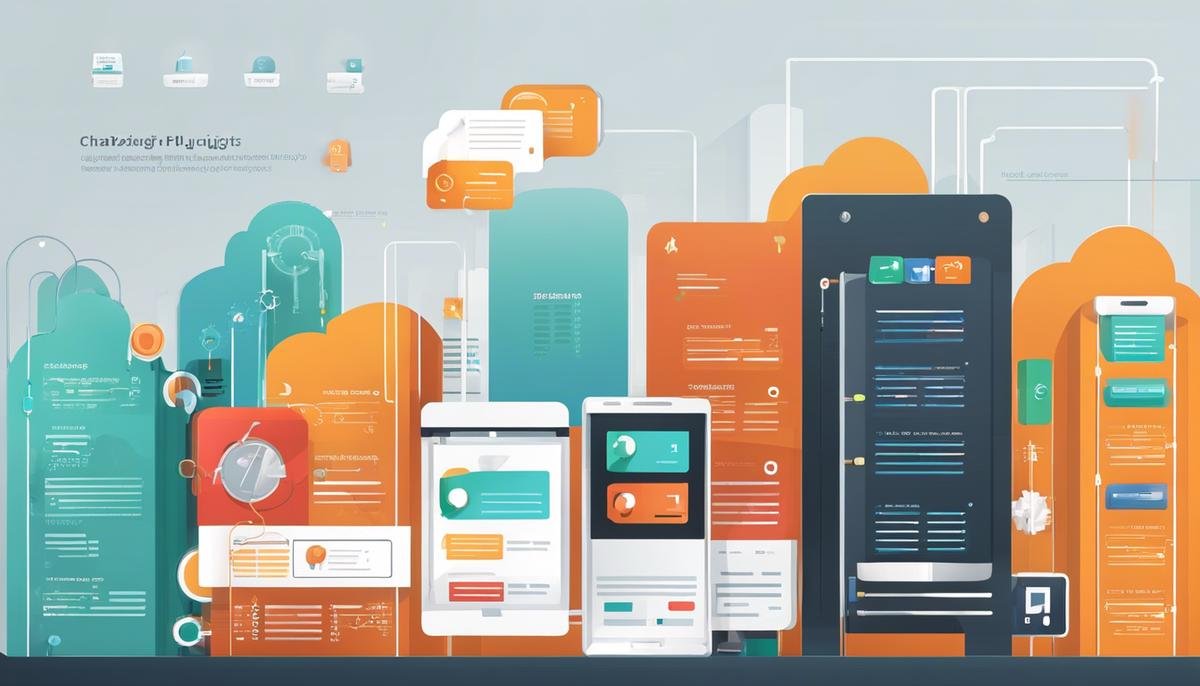In an age where artificial intelligence is rapidly transforming the way we perceive communication, one of the stand-out innovations is OpenAI’s ChatGPT. This AI model, based on the concept of Generative Pre-trained Transformers, has paved the way for intricate, human-like text conversations. It’s thus important to have a firm grasp on its mechanism and functionality. To further enhance its capabilities, OpenAI has introduced something called plugins, a novel way to customize and amplify the conversation with the AI model. This article will guide you through your first introduction to ChatGPT and its plugins, providing comprehensive insights into their significance in relation to ChatGPT’s baseline capabilities, and the advantages they extend, particularly in terms of crafting custom responses and tailoring the system’s behavior.
Understanding ChatGPT and its functional basis
Unveiling ChatGPT: Revolutionizing Conversation with Artificial Intelligence
Autonomous vehicle designs, autonomous drones, home automation systems, machine learning algorithms – technophiles around the globe revel in the swift pace of advancements in the tech industry. One such groundbreaking phenomenon that has been creating buzz in the tech-space is ChatGPT. But what exactly is ChatGPT, and how does it function?
Originated from OpenAI, ChatGPT is a state-of-the-art machine learning model designed to partake in human-like text conversations. Leveraging the power of artificial intelligence, ChatGPT has the ability to comprehend, respond and generate text that emulates human conversation, displaying a major stride toward achieving Natural Language Understanding (NLU).
ChatGPT operates on a powerful AI software model known as a Transformer. The underlying working principle of ChatGPT is an unsupervised learning approach called GPT (Generative Pretrained Transformer). This framework first trains the model by capturing patterns of language usage across a massive corpus of internet text. It then fine-tunes this model with reinforcement learning from human feedback, thus teaching it how to respond accurately in a conversation.
A key component enabling the impressive performance of ChatGPT is the sheer scale at which it operates. The model has been trained with a diverse set of data, numbering 175 billion parameters! This gigantic scale allows it to generate creative, coherent, and contextually appropriate responses in conversation.
Despite its cutting-edge performance, ChatGPT is not without its imperfections. At times, it might showcase an inclination to generate nonsensical or overly verbose responses and may sometimes even respond to harmful instructions or exhibit bias. But OpenAI is constantly working to improve the system, deploying both technical and policy measures to mitigate these limitations.
In essence, ChatGPT is an exciting demonstration of how advancements in AI are working towards the goal of seamless human-machine communication. By taking advantage of the vast amount of data available, and employing advanced learning models to understand and generate human language, the potential applications of technologies like ChatGPT seem boundless. From customer service chatbots to personal digital assistants and much more, ChatGPT showcases the leaps and bounds by which artificial intelligence is reshaping the future of technology. So, keep your eyes peeled for more innovations from OpenAI and the thrilling future of AI-generated conversation!

Introduction to ChatGPT plugins
With the introduction and exploration of ChatGPT well covered, let’s delve into the pivotal aspect of ChatGPT functionality: plugins.
A plugin can best be described as a software extension that adds a specific functionality to an existing computer program, allowing for customization and enhancing the core functions of a system. A program like ChatGPT uses plugins to extend its capabilities and improve its usefulness.
In the case of ChatGPT, plugins contribute immensely to the execution of complex tasks and ensure flexibility to accomplish a wide array of functions. They act as critical add-ons, enabling ChatGPT to go beyond its basic functionality and offering unique services that cater to diverse and so-called ‘niche’ needs.
ChatGPT plugins also have various benefits. They pave the way for enhanced functionality and improved customizability. Plugins can provide additional filtering options for conversations, slightly tweak the content produced by the bot, or even provide entirely new abilities, making the system more adaptive and personal.
Importantly, plugins ensure that ChatGPT is easily scalable and capable of evolving over time. By permitting magnified functionality inclusions over time, they radically enhance the system’s scalability. Scalability is crucial for an AI model like ChatGPT since it is designed to evolve and improve to meet emerging trends and demands.
Furthermore, plugins track users’ needs and preferences, enabling AI to seamlessly blend into various mundane and specialized tasks. As such, they contribute to achieving OpenAI’s vision of broadly distributed benefits. By extending the core capabilities of ChatGPT and providing it with the possibility of being more useful, plugins help in ensuring all users, irrespective of their unique needs, benefit from AI.
These dynamic extensions also provide crucial adaptations for the AI model to deliver optimal output. Thanks to plugins, the AI system can be calibrated to provide applications in diverse areas such as customer service, gaming, content generation, and more. Thus, plugins make possibilities limitless for ChatGPT.
In conclusion, plugins in ChatGPT are the gears that keep the engine of this transformative tech running. They are the game-changers that give a basic AI model the ability to deliver an impressive array of specialized functionalities. Therefore, in the realm of AI, and specifically in the case of ChatGPT, plugins are not just additional elements, but essential ones. They are the tools that help shape the AI landscape, catalyzing the transformation that we are witnessing in the tech world. So, next time when you marvel at the prowess of ChatGPT, remember, there’s a robust relay of plugins in action, making it all possible.

Implementing and utilizing ChatGPT plugins
Moving forward, let’s dive into the intricacies of implementing and utilizing the custom plugins in ChatGPT, a sophisticated but user-friendly task. Before implementing, users must identify and select the right plugins aligned with their needs and the desired enhancement of ChatGPT functionality.
Once analyzed and sorted, follow these concise steps:
- Download or purchase the desired ChatGPT plugin. Ensure it’s authentic, bug-free, and compatible with your version of ChatGPT.
- Install the plugin into your ChatGPT system. Navigate through your ChatGPT interface and find the “Plugins” section. Click on the “Add Plugin” option and upload the downloaded files.
- After successful installation, activate the plugin. Inside the “Plugins” section, there will be a list of all installed plugins. Locate your new plugin and click the “Activate” button next to it.
- Configure settings if necessary. Some advanced plugins come with customizable settings, allowing users to fine-tune their requirements.
Note: Always read the installation and configuration instructions provided with the plugin. Manufacturers often offer unique steps or requirements.
Now, how does one leverage these plugins to their maximum potential? It’s relatively simple and straightforward. Most plugins are characterized by their seamless integration and intuitive user experience, ensuring effortless utility enhancement.
Here’s how:
a. Tweak Settings: Play around with the plugin settings after installation and activation. Adjust them according to your requirements and preferences.
b. Update Regularly: Keep the plugin updated. The latest version might bring along new features, better security, or performance improvements.
c. Explore Use Cases: Utilize them in varying situations and requirements. The more you employ plugins, the better you’ll understand how to leverage them.
d. Connect With Community: Learn from other plugin users. Engage in forums or communities where they discuss troubleshooting, best practices, and innovative application of features.
Let’s not overlook, plugins are as crucial as the prime tool, ChatGPT in this case. They provide a level of customization and tailored functionality that’s powerful and crucial. Whether you’re in customer service aiming for effective automated support, a game developer trying to craft personable non-playable characters, or a wordsmith looking to automate some of your content-generation tasks, plugins will be your ace of spades.
On a final note, let’s remember, the transformative capacity of AI is not just in its deep learning models and reinforcement protocols, it’s also in the customizable, scalable, and increasingly user-intuitive plugins. Their capability to trace users’ needs and use that information to broaden AI benefits is nothing short of awe-inspiring, contributing significantly to the revolutionary wave in the tech industry. They might just be the piece of the AI puzzle that was missing all along.

When it comes to implementing plugins in ChatGPT, having practical knowledge is key. The real value of these plugins lies not just in their availability, but in their effective use for generating desired custom responses and conducting dynamic conversations. Therefore, understanding the types of plugins and the process of integrating them can be particularly empowering. This will allow you to take the fullest advantage of OpenAI’s chatbot AI model, enhancing your user experience to a great extent. Remember, the optimal use of ChatGPT and its plugin ecosystem is a clear path to exploring the best that current AI technology can offer in transforming the way we communicate.



